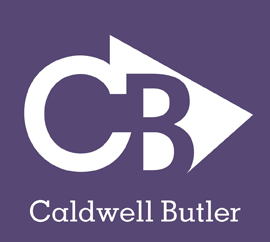The "Big Q" Core Process Drivers
Top performing organizations know how to manage their capacity for change. Rather than overload the organization with projects, they tend to organize their efforts around large strategic processes. They focus their efforts into short strategic burst. Their mantra could be best described as: “We can’t solve world hunger, but what large core processes can we improve during the next 100 days.” This approach ensures that efforts are concentrated and produce strategic results. It produces better returns than the “bucket-of-projects” approach applied by most organizations.
CBA works with organizations to help them improve the strategic linkage of their efforts and reduce organizational overload. Below is a list of major core processes any hospital can use to organize their efforts to achieve world-class levels of operational, clinical and financial excellence.
-
Quality Waste Recovery
-
In-Quality Staffing > 95%
-
Patient Flow=(One More Unit of Service x Per Time Period X Resource)
-
ED Length of Stay < 3 Hrs Discharge /4 Hrs Admit
-
Surgery Cut-to-Close >50%
-
2:00 pm Discharge/ 1 Hr to Next Patient > 80%
-
Access and Admission
-
Clinical Process redesign = Reimbursement Realities
-
Revenue Cycle Accuracy > 90% Clean Claims, 5 days post Discharge
-
Preventing Market Leakage and Driving Growth
Sub Process Critical to Quality Variables:
In-Quality Staffing > 95%
-
Meeting Definition of Quality > 95%
(Right people, Right Place Right time)
Emergency Department Length of Stay < 3Hrs Discharged / 4 Hrs Admit
-
Walk-In to ED Bed < 30 Minute (USL)
-
ED Bed to ED Physician Assessment < 15 Minutes (USL)
-
Time to Last Diagnostic Order < 45 Minutes (USL)
-
Lab/X-Ray Order to Result < 60 Minutes (USL)
-
Diagnostic Results to ED Phys Review < 15 Minutes (USL)
-
ED Physician Request for Bed < 30 Minutes (USL)
-
Bed Notified to Transport < 30 Minutes (USL)
-
Discharge Order to Discharge < 20 Minutes (USL)
-
In-Quality Staffing > 95% (LSL)
-
ED Physician LOS Variation 3-Hrs /4 Hrs (USL) +/- 45 Min
Surgery Cut-To-Close > 50%
-
Incision Time No Later Than < 7:40 am Start Time (USL)
-
Room Turn-Around-Time (TAT) < 15 Minutes (USL)
-
To-follow Case Scheduling Variance +/- 15 Minutes (USL)
-
Surgeon Preference Card Accuracy > 95% (USL)
-
In-Quality Staffing > 95% (LSL)
-
Surgeon In Room to Scheduled Time +/- 10 Minutes (USL)
Surgery Cut-To-Close > 50%
-
Zero Missed Discharge Appt. / FMEA < 30 Minute (USL)
-
Lab Results Reviewed by Physician < 4 Hours Prior to Pat. Dis. (USL)
-
Patient Departure Transport Confirmed < 4 pm Prior Day (USL)
-
Next Patient in Room < 60 Minutes after last Dis.(USL)
-
In-Quality Staffing > 95% (LSL)
-
Physician Practice Variation Drivers
Revenue Cycle Accuracy > 70%
-
Percent Clean Claims
5 Days Post Discharge >90 Percent (LSL)
18 Change Concepts (out of 84 total) for Eliminating Quality Waste
Process engineers use 84 change concepts to evaluate a process. Below is a summary of the 18 change concepts most frequently applied to improve productivity:
-
Eliminate things that are not used.
-
Standardize processes where possible.
-
Consolidate functions and job classifications.
-
Eliminate multiple entries.
-
Reduce or eliminate overkill.
-
Recycle or reuse.
-
Use substitution.
-
Use constraints and forcing functions.
-
Use reminder systems.
-
Reduce classifications.
-
Apply a default mode.
-
Minimize hand-offs.
-
Adjust to fluctuations demands.
-
Reduce setup or start up times.
-
Move steps in the process close together.
-
Find and remove bottlenecks.
-
Match staffing to demand.
-
Shape demand.
